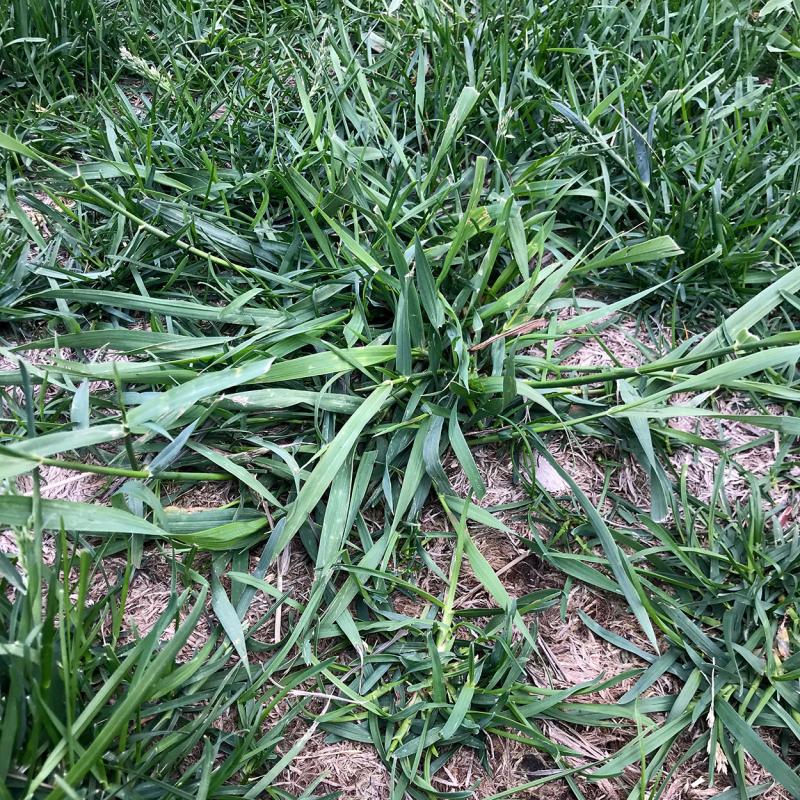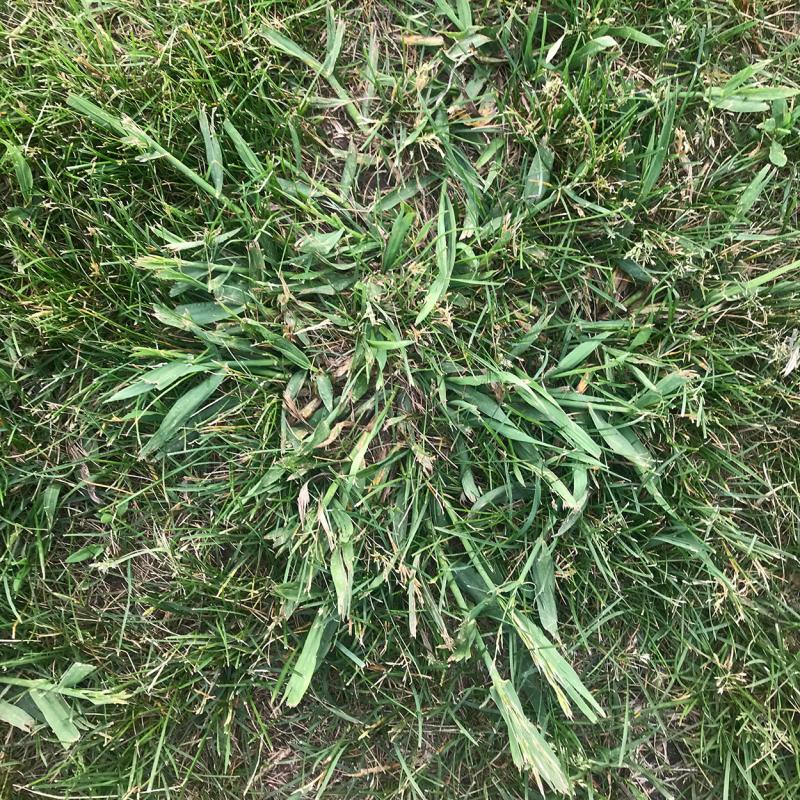
Written by Tess Wagner, SDSU Extension Horticulture Assistant, under the direction and review of Brett Owens, Gared Shaffer and Kristine Lang.
Each year homeowners and businesses typically find crabgrass invading their lawns. If you desire a nice lawn, you may not be happy about this. Crabgrass can be a bit tricky to control—especially after it has established itself for the season.
What is Crabgrass and Why Control It?
Crabgrass differs from other turfgrasses by being an annual grass. It has wider leaf blades that are light green and are usually easy to distinguish from the perennial turfgrass found in most lawns in South Dakota (Figure 1 and Figure 2).
Crabgrass is unwanted, not only because its texture and color give a spotty appearance to the lawn, but also because it competes with turfgrass for moisture, fertility and light. This competition weakens the turfgrass and eventually results in an inferior lawn.
Another important characteristic of crabgrass is that it thrives during hot weather. Turfgrasses most commonly found in South Dakota lawns are cool-season perennial grasses. Most of the time you will be able to observe slower growth of the turfgrass during hot, summer weather. This allows the warm-season crabgrass to take over in areas where the turfgrass is already struggling.
Managing Crabgrass

If you prefer an organic method of control, the best management is to simply pull the crabgrass plant out, being careful to extract the full root. The less chance it has to propagate, the better. This can be painstaking if you have a large infestation.
For chemical control, use a pre-emergent herbicide containing the active ingredient(s) of pendimethalin, dithiopyr, siduron, trifluralin, benefin, DCPA or bensulide. These pre-emergent herbicides should be applied in the spring, usually during that two-week period from the end of April into May. The pre-emergent product is meant to disrupt the germination of the weeds. Keep in mind that a pre-emergence product will disrupt the germination of new grass seed as well, so timing is critical.
If the pre-emergent window has passed, a post-emergent herbicide is recommended. Be sure to use a post-emergent herbicide that is specifically designed for crabgrass, with an active ingredient of quinclorac. These products are safe to use on perennial turfgrasses. Once you have a season of keeping crabgrass at bay, switch to treating with a pre-emergent product each spring.
Once the crabgrass is absent from the lawn, a good over-seeding will help establish those bare areas and should populate rather quickly. The idea is to fill every inch of the lawn with healthy turf that will outcompete the weeds for sun, food and water. Those new little seedlings will be plenty thirsty, so be sure to water daily while the seed is germinating and starting to grow. As a reminder, most cool-season turfgrass needs about an inch of water per week after establishment.
It’s a good idea to diversify the turfgrass ecology in a yard, so look for a mixture high in Kentucky Bluegrass and less perennial ryegrass and fescue. Examples would be a 70 percent bluegrass, 20 percent ryegrass and 10 percent fescue mix for sunny areas of the lawn, and a good blend of fescues for the shady areas.
Special thanks to SDSU Extension Master Gardeners Tim Schreiner and Stacy Dreis for serving as volunteer copyeditors of this article.
Reference:
Pre-Emergence Crabgrass Control by William G. Macksam, Kenneth R. Frost, and Dean M. Martin


